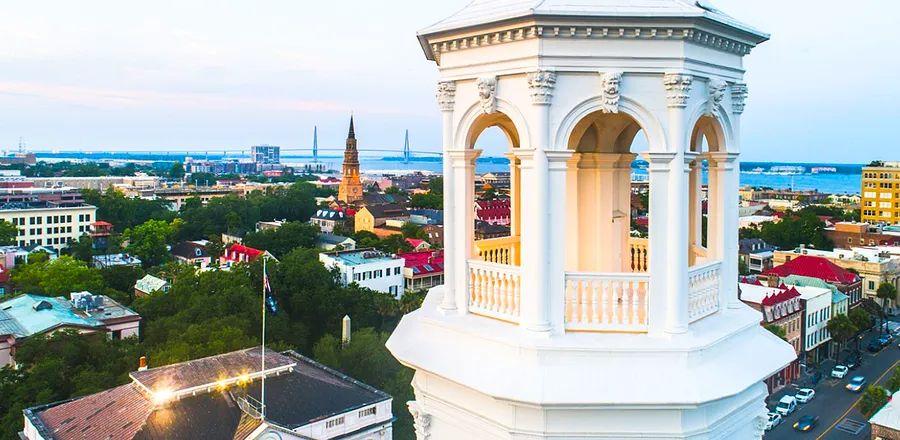We Evaluated AI Travel Planning Apps—Here Are the 3 That Truly Delivered

As I navigated through the latest AI travel-planning tools, something remarkable happened: I discovered one that largely fulfilled its promises.
While testing AI programs that claim to generate instant, tailored travel itineraries, I encountered many amusing and bizarre responses typical of AI tools like . (One directed me to an event in Burlington, Vermont, instead of Charleston, South Carolina, and another suggested an EconoLodge as a historic hotel.)
Yet, surprisingly, three tools emerged that could produce solid, coherent first-draft itineraries almost instantly in response to straightforward prompts: Mindtrip, Vacay, and GuideGeek.
Remember, all of these tools offer travel plans that primarily serve as frameworks for you to refine and expand. They present useful ideas you might overlook and compile a rough itinerary much more quickly than the traditional method of Googling and sifting through booking platforms.
That being said, some of the information provided can be outdated, inaccurate, or just plain wrong. If you attempted to follow an itinerary from these tools without verifying anything beforehand, you might end up with a script for a Hollywood comedy: AI Family Vacation (which, incidentally, could be a fun movie concept).
I put each of these tools to the same challenge: I asked them to create a four-day itinerary for two in Charleston, focusing on farm-to-table restaurants showcasing authentic South Carolina cuisine (including Gullah-Geechee dishes), a few rum bars, and accommodations in a historic downtown hotel. Then I added a twist to see if the AI could handle it: I requested suggestions for activities that explore the city's lesser-known historical ties to Barbados (as Charleston was founded by wealthy Barbadian plantation owners whose influence on Carolina culture is still evident).
All three tools essentially delivered as requested. They suggested the same hotel, and many of the recommended restaurants were good choices that overlapped. The Gullah-Geechee and rum bar suggestions were on point. However, while the AI tools provided well-curated lists of activities that introduced me to Charleston’s history, they largely missed the mark on the Barbados connection.
In summary, the performance of these three tools indicates that this incredibly promising yet often confusing technology can streamline vacation planning. However, it doesn't fully solve the timeless challenge every traveler faces: how to truly engage with an unfamiliar place and its residents in a meaningful way. Only human intelligence can achieve that. So, how did they compare?
Mindtrip
Mindtrip stands out as the most polished and advanced option available. Simply input the type of trip you're looking for, with as much detail as possible, and it generates a trip plan.
Highlights
The itinerary features maps, allowing you to visualize the distances between locations. Each entry includes a live web link; hovering over it reveals an image and summary. You can view the plan as either a printed itinerary or in calendar format. Everything is easily shareable, and you can pose additional questions or modify individual days with ease. When the tool recommends Mindtrip’s partners, a booking link appears. For instance, it suggested a visit to Drayton Hall, a plantation founded by Barbadians, and selected the Mills House Charleston Curio Collection by Hilton, a perfectly situated historic hotel, along with a link to book a room. (The company asserts that partnerships do not sway the itineraries.)
Lowlights
It misidentified connections to Barbados, erroneously linking two activities to the island when they had none. It inaccurately claimed a Barbados connection for the City Market and directed me to a whiskey bar instead of a rum spot.
Vacay
Vacay prompts you for some details about your trip (destination, duration, number of travelers, budget), then offers two open-text fields for you to provide additional information in your own words.
Highlights
The itineraries feature budget breakdowns for each day, activity, and overall cost, clearly organized into morning, afternoon, and evening segments. Travel plans are straightforward to download and replicate, making Vacay the top choice for creating printable, editable draft plans that can be modified as Word or Google documents. It also suggested the Mills House for accommodation and excelled at addressing the Barbados theme by recommending a visit to the Charles Towne Landing state historic site, where the Barbadians arrived in 1670, and the International African American Museum, which showcases connections between Barbados and Charleston in the context of the African diaspora.
Lowlights
The plans generated by Vacay do not include maps or web links. To adjust the itinerary, you can either re-query or interact with the Vacay chatbot, but any additional responses won’t update your original itinerary.
GuideGeek
Developed by the travel media brand Matador, GuideGeek is a chatbot accessible via Facebook, Instagram, and WhatsApp. Simply send a message to get started, then type your requests to receive a plan.
Highlights
As a chatbot, GuideGeek encourages ongoing dialogue, allowing you to ask for details, adjustments, and further information. It can provide live web links upon request, although some may be outdated or non-functional. I found this to be the most user-friendly pocket AI travel advisor. It also recommended the Mills House for my stay!
Lowlights
GuideGeek is only compatible with mobile devices. Itineraries are divided into arbitrary segments based on the character limits of each platform, making them difficult to download or copy as a whole. GuideGeek also missed the mark on the Barbados connection, suggesting four activities unrelated to it and directing me to a modern distillery that doesn’t produce rum.
Three Tips for Planning a Trip with AI
Be very specific. All generative AI tools perform better when given detailed instructions. Vague inquiries about a trip often yield information mainly sourced from the first page of Google search results.
Don’t like it? Change it. Once you have your itinerary, feel free to request updates, explore further options, or create a new version altogether.
Two (or three) neural networks are more effective than one. Utilize multiple tools to cross-check their outputs. Combine insights, verify all information, and incorporate knowledge from trusted real-life sources.

1

2

3

4

5
Evaluation :
5/5